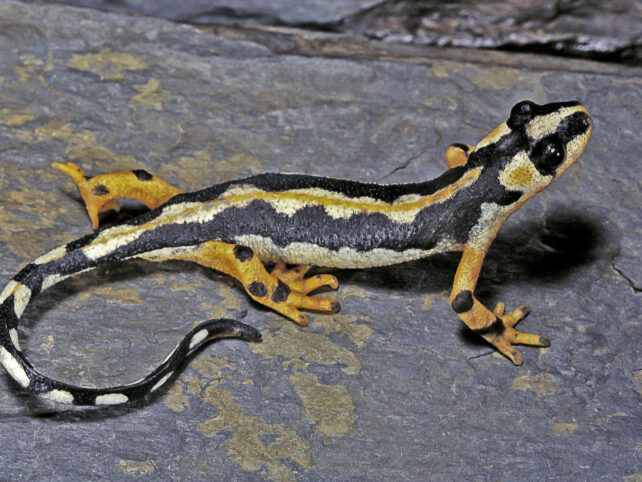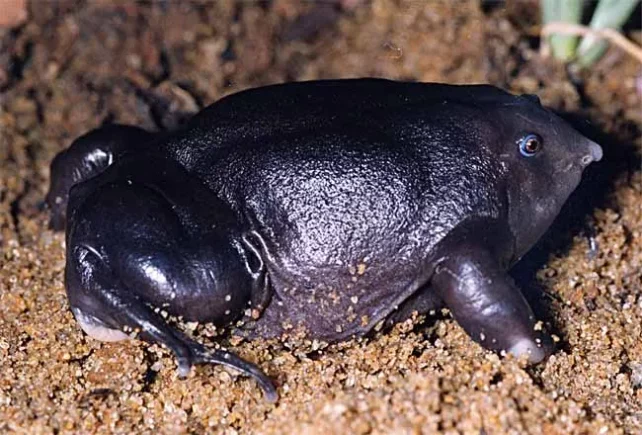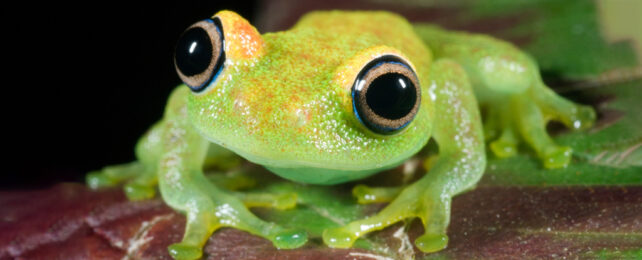Amid the sixth mass extinction, frogs, salamanders, and caecilians remain the most threatened group of vertebrates on Earth. Over 40 percent of amphibian species are now threatened, the latest global assessment has found.
"Amphibians are disappearing faster than we can study them, but the list of reasons to protect them is long, including their role in medicine, pest control, alerting us to environmental conditions, and making the planet more beautiful," explains Re:wild ecologist Kelsey Neam.
While disease and habitat loss drove more than 90 percent of amphibian declines before 2004, there's a new main culprit in town: climate change.
The effects of our changing weather systems and resulting impacts on environmental conditions are now driving 39 percent of the decline in this ancient group of animals. Not far behind, at 37 percent, habitat loss remains stubbornly high despite decades of pleas from environmental scientists to protect these often striking and unusual animals.

"These species are the 'canaries in the coal mine' – they are highly sensitive to factors such as climate change and pollution, which lead to extinction, and are a stark warning of things to come," explained University of Oxford zoologist Jonathan Baillie, who was not part of the new study, back in 2018. "If we lose them, other species will inevitably follow."
So Re:wild environmentalist Jennifer Luedtke and colleagues assessed 8,011 species of amphibians to update their status for the International Union for Conservation's Nature (IUCN) Red List of Threatened Species. The previous assessment was back in 2004.
Sadly, the situation has only deteriorated since then.
"The number of known amphibian extinctions could be as many as 222 over the last 150 years if all [Critically Endangered (Possibly Extinct)] species are indeed extinct," the researchers explain in their paper.
The Chiriqui harlequin frog (Atelopus chiriquiensis) and sharp snouted day frog (Taudactylus acutirostris) declined rapidly in the 1990s due to the fungal disease, chytridiomycosis, while Craugastor myllomyllon and Pseudoeurycea exspectata were last seen in the 1970s and are thought to have been wiped out by agricultural expansion.
Disease and pollution are also creating weird deformities in some species, while other amphibians also contend with other human threats like poaching.

Now, the effects of more frequent and destructive fires and reduced soil humidity are already hitting five salamander species in the US. Decreases in rainfall in the wet tropics of Australia and Brazil are predicted to impact frog breeding, while amphibians living on the Venezuelan table-top mountains can only climb so high to follow the shifting climate.
"The true impacts are probably underestimated," Luedtke and team warn. But the information they've gathered can help inform conservation efforts.
"This study shows hotspots of disease in central and eastern African amphibians as an emerging concern for their conservation on the continent," explains Stellenbosch University biologist John Measey.
"If the IUCN Red List had been updated on a similar scale in the 1970s that it is today, we could have traced the sweeping amphibian disease pandemic 20 years before it devastated amphibian populations," adds co-founder of Synchronicity Earth Adam Sweidan.
Because amphibians control insect populations, their extinctions can impact our own wellbeing. In a stark example of this, increases in malaria followed the decline of mosquito-eating frog species in South America between the 1980s and 2000s.
We may not always be able to see it, but amphibian extinctions impact us all.
"Protection and restoration of amphibians is a solution to the climate crisis because of their key role in keeping carbon-storing ecosystems healthy," says Neam.
"As a global community it is time to invest in the future of amphibians, which is an investment in the future of our planet."
This research was published in Nature.
